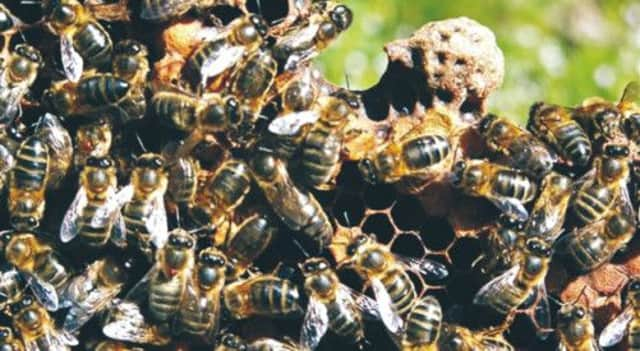Colonsay and Oronsay to become honeybee havens


There are around 250 native species of bee in Britain but just a single honeybee – the Apis mellifera mellifera.
The isles of Colonsay and Oronsay are currently home to around 50 colonies and have now been named in a new Scottish Government order to protect the species from cross-breeding and disease.
Advertisement
Hide AdAdvertisement
Hide AdThe Bee Keeping (Colonsay and Oronsay) Order 2013 comes into force on 1 January and will make it an offence to keep any honeybees on the islands except Apis mellifera mellifera, whose hardiness allows them to survive the harsh climate of Scotland’s west coast.
Beekeeper Andrew Abrahams has campaigned for the islands to be recognised as a sanctuary for the species. He began keeping bees on Colonsay 35 years ago, but the island has an even longer tradition as a haven for the black bee. Its isolation and lack of an existing honeybee population saw it chosen as the site for an experimental breeding station for the native bee in 1941.
Welcoming the new legislation, Abrahams said: “It’s the government’s acknowledgement that native bees should be conserved because they are much more suitable to our difficult environment, and the increasingly difficult environment global warming will bring us.”
Most of Britain’s native honeybee species were wiped out in the early 20th century by the “Isle of Wight disease”, caused by a parasitic mite which spread throughout the country. A few isolated populations survived and formed the basis of apiaries set up by Abrahams in 1978.
The biggest threat to bees kept in apiaries today is the deadly Varroa mite, which was first discovered in the UK in 1992 and has led to the virtual elimination of feral bee colonies in many areas. Colonsay was chosen as a reserve because its bees are free from the disease and are genetically pure.
The Scottish Government granted the order after a public consultation received overwhelming support.
Nigel Southworth, editor of the Scottish Beekeeper magazine, said: “This is great news for beekeeping, not only in Scotland, but the whole of the UK and beyond.
“Congratulations to Andrew for achieving this and full credit to the Scottish Government for going ahead with the reserve.
Advertisement
Hide AdAdvertisement
Hide Ad“At a time when honeybees are facing perhaps the greatest threat to their survival, this very positive move could be seen in future years to be one of the landmark decisions that helped not only to save this kind of bee, but triggered new initiatives to help both the honeybees and mankind.”
Eric McArthur, vice president of Glasgow and District Beekeepers’ Association, said: “The need for this reserve has been a long time in coming.”
McArthur added that the Colonsay and Oronsay reserve ranks in importance with Australia’s Kangaroo Island, which was designated as a reserve for the native bee of Italy, Apis mellifera ligustica, which was imported there in the 1880s. It is now believed to hold the last remaining pure stock of the species anywhere in the world.
McArthur said: “The honey bees on Colonsay and Oronsay have the same significance for future Apis mellifera mellifera genetic purity as Kangaroo Island has for Apis mellifera ligustica.
“These islands will become a Mecca not only for worldwide beekeepers interested in seeing the pure race Apis mellifera mellifera for themselves but also for scientists investigating the limits of genetic diversity in any closed and isolated population.
“The importance of the Colonsay and Oronsay honeybee reserve to Scotland’s economy cannot be stressed strongly enough and the islands should be developed as a Centre of Excellence for the black bee of Scotland.”
Environment and climate change minister Paul Wheelhouse, who signed the order, said the new reserve fits in with wider work being undertaken on bee health in Scotland and would be significant in ensuring a bright future for black bees on the island.
“The Bee Keeping Order illustrates how our non-native species legislation can be used to protect our native wildlife,” he said.
Advertisement
Hide AdAdvertisement
Hide Ad“The order is a targeted measure to protect an important population of black bees on Colonsay from hybridisation with non-native bees.
“We are working in close collaboration with the Scottish Beekeepers Association and Bee Farmers Association to deliver the ten-year Honeybee Health Strategy, which aims to achieve a sustainable and healthy population of honeybees for pollination and honey production in Scotland.”